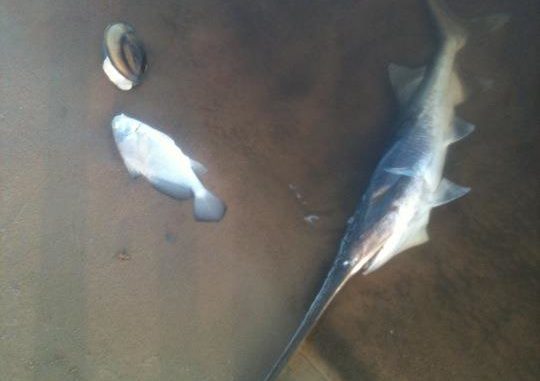
A black pearl is one of the rarest of gems. But in August of 2011, Louisianans found their beloved Pearl River became black.
But it wasn’t a gem. It was a stinking mess.
The Temple-Inland Paper Mill in Bogalusa had, for unspecified reasons, released a slug of innocently named “black liquor” into the West Pearl River.
Untold thousands of dead fish floated on 47 miles of the river.
Black liquor contains a mixture of chemicals used to treat wood pulp for paper production. It is highly alkaline — enough to be toxic to aquatic life, including fish, shrimp, mussels and aquatic insects.
Of course, immediate environmental panic set in, similar to what happened during the speckled trout-redfish kill in the Great Freeze of 1989, the BP oil spill and the Bayou Corne sinkhole.
St. Tammany Parish President Kevin Davis declared a state of emergency. No one should swim, wade, fish or come in contact with waterways in the Pearl River watershed, the parish Davis warned.
He also advised that no one eat, handle or collect fish or shellfish from those waters, and that pets should be kept from the water.
Many, if not most, fishermen predicted that the fish population would never recover.
The bad news fed on itself.
“The kill was bad everywhere that West Pearl River waters went, which is everything but the East Pearl,” Chance Morse acknowledged. “Fishing was bad for two or three years. You might catch three or four bass fishing all day.”
The situation was difficult but nature has a way of replenishing itself.
“I was heart-broken. It’s my playground. I quit fishing in the Pearl for two years,” Morse said. “But it has come back. In the last five years, it has come back as good as before. You can catch 50 fish a day.
“Honestly, I would say that how it’s better than before.”
